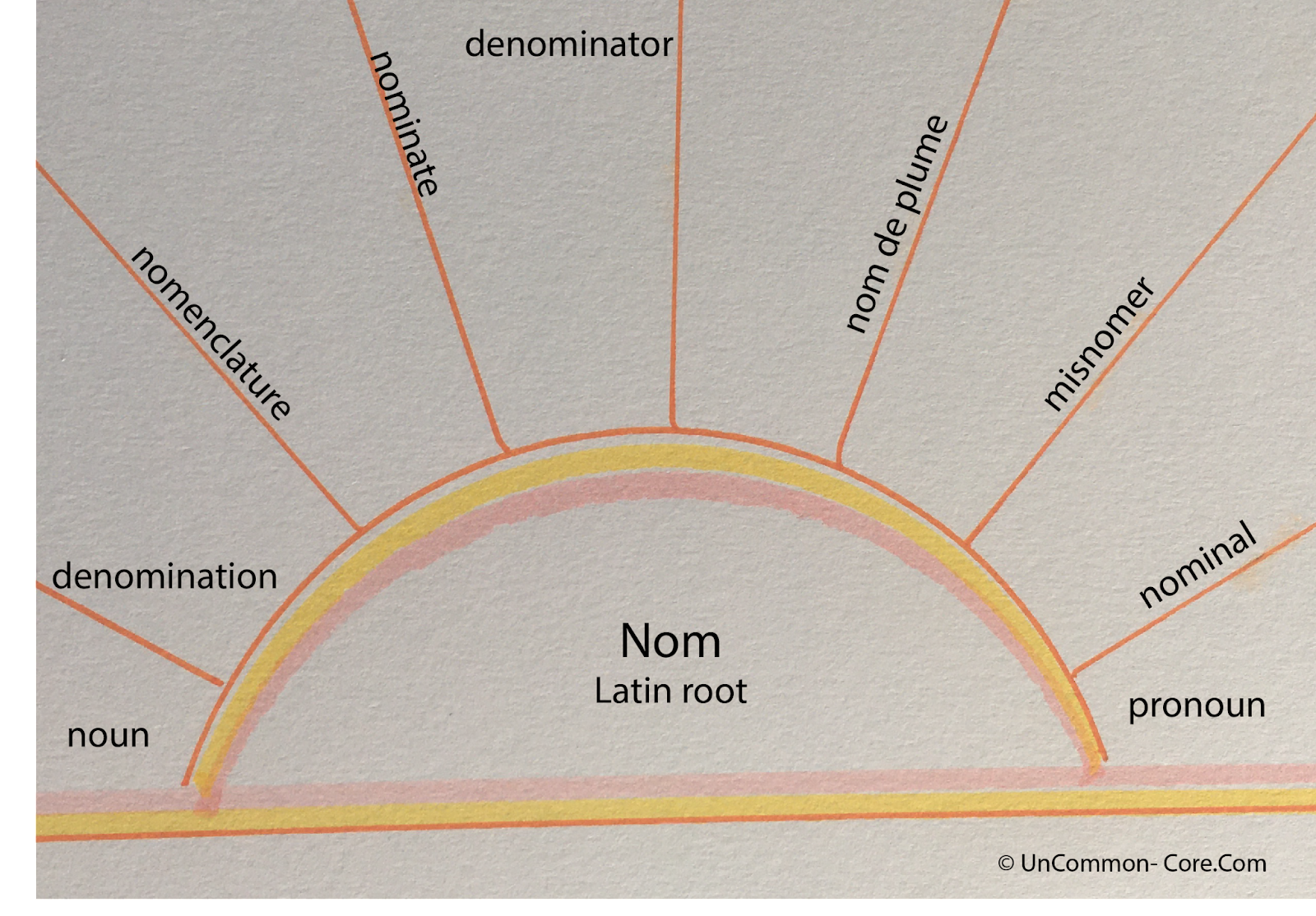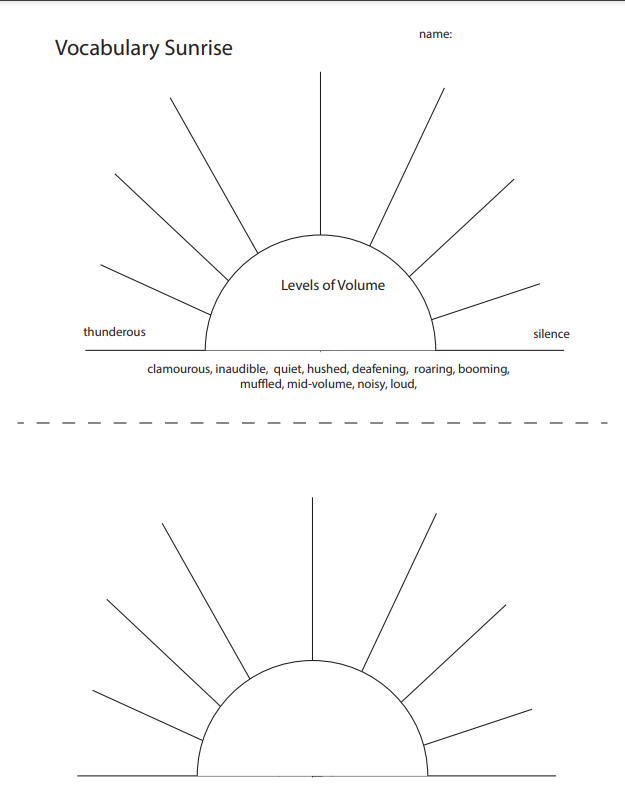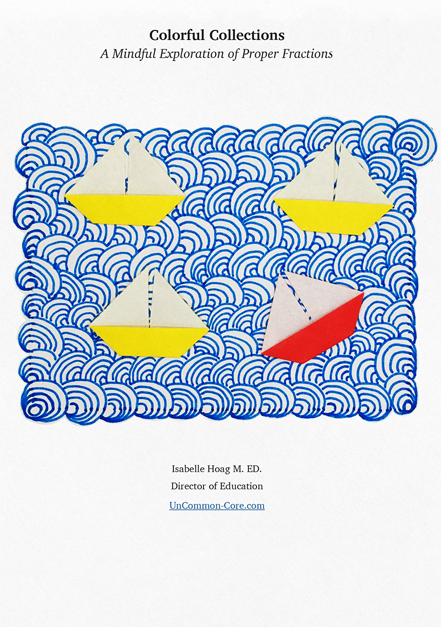
Gradations of Meaning, Whole/part relationships, and Expressions of Equality
Building student vocabulary is an essential part of promoting academic success. Students with a larger stock of words and a deeper understanding of the nuanced ways in which those words can be used, tend to do better in school. They have more background knowledge to build on. They can read and comprehend difficult texts.
We can think of words as hooks upon which to drape ideas – or better yet, as handles that we can use to grasp, manipulate, and (literally) get hold of an idea. Having a larger lexicon gives students an academic advantage. They have more ways to grasp hold of ideas.
Graphic organizers that show relationships between words, encourage students to think about minute differences in how synonyms are used, or that help students remember complex word meanings & spelling can be used in classrooms of all ages and academic levels.
Gradations of Meaning
 For example, the Sunrise graphic organizer invites students to compare, organize, and value gradations of quality described by vocabulary chosen by their teachers. If the class is studying units of measure, the teacher could have students arrange the following words in order of length: inch, centimeter, yard, kilometer, meter, foot, mile and millimeter, from left to right along the rays of a rising sun (pictured on the students’ paper).
For example, the Sunrise graphic organizer invites students to compare, organize, and value gradations of quality described by vocabulary chosen by their teachers. If the class is studying units of measure, the teacher could have students arrange the following words in order of length: inch, centimeter, yard, kilometer, meter, foot, mile and millimeter, from left to right along the rays of a rising sun (pictured on the students’ paper).
Math students could arrange words and numbers to illustrate the process of two lines moving from parallel to perpendicular to one flat line. The list might include: acute angle, obtuse angles, 45 degrees, right angle, 90 degrees and square corner. Synonyms could share the same line. Other possibilities for math students would be to have them list items in order of probability, level of hierarchy, degrees of freedom, or certainty.
Science students could order vocabulary by gradations of acidity, density, salinity, buoyancy, or velocity. Items could also be sorted chronologically, by size, weight, capacity, or by any quality that the teacher would like students to measure. These could include temperature, magnetic strength, viscosity, luminosity, or the biodegradability of certain substances. Vocabulary Sunrise activities would be helpful in terms of identifying gradations of intensity in terms of volcanic activity, Moh’s hardness scale, tsunamis, and earthquakes.
Art students could order terms from opaque to transparent, famous artists from abstract to representative, or colors from orange to pink. Historians could value sources from original artifacts all the way to opinions and rumors. English students order villains in literature from mild to heinous or list authors or titles chronologically from Beowulf to TikTok.
Steps in a Sequence
The Sunrise graphic organizer could also be used when you want your students to focus on a series of sequential events. It could be completed by the teacher, then shared with students as a visual study guide to stages of the water cycle, photosynthesis, or the order of events in a story. You could give a blank copy to students as an assessment of how well they can order the steps in a sequence they have been learning about in class.
A blank copy of the Sunrise graphic could help students write a persuasive paper. Students could complete the Sunrise graphic while thinking about the order in which they should present their ideas. Then review the order of ideas before they start writing in order to make sure that they have included everything they wanted to say in a logical order.
Whole/Part Relationships
Making sense of big ideas and the arguments which support them can be challenging for students. Teachers could use the Sunrise graphic organizer to introduce or support this idea.
Start with a straightforward demonstration of how to use the graphic organizer. The task should be so simple that students have no difficulty deciding which words go where. The word representing the entire thing goes in the center. Words for pieces of that thing radiate out. For example, teachers might place the word ‘tree’ in the center, or even draw a picture of a tree for very young students. Working as individuals, pairs, or small groups, students would complete the organizer by writing or drawing parts of a tree (roots, trunk, bark, branches, twigs, leaves) around the center. Once students are familiar with how the sunrise image can be used to illustrate the relationship between a whole thing and its parts, you could assign more challenging tasks.
Give older students a blank page of paper and have them draw the entire sun with as few or as many rays as needed for them to complete the assignment. Designing their own graphic organiser allows students to include as much detail as they need. Show them how to use the sun’s rays as categories which can then be populated with more details.
Continuing with the tree example, students of tree anatomy might label one of the sun’s rays ‘trunk.’ Next, they could extend that line in two directions, making two lines labeled ‘bark,’ and ‘wood.’ The “bark” line could be further divided and labeled ‘outer bark,’ and ‘phloem/inner bark.” The ‘wood’ line could divide to show more parts of the tree trunk such as, ‘cambium,’ xylem,’ ‘sapwood,’ and ‘heartwood.’ Students could use this graphic organiser to take notes while reading. The same graphic organizer could be used as a study guide and later as an outline for writing down what they have learned about trees. These kinds of activities help students learn whole/part relationships as well as visualize how the various parts connect to create the whole. They also give students insight into how new vocabulary words relate to each other and to the complete whole.
Expressions of Equality
The Sunrise graphic organizer can also be used to help students find synonyms or depict expressions of equality.
Before you make copies for your class, write a word or idea in the half circle ‘sun’ space. You may wish to start with something easy such as ‘large,’ or ‘bright.’ Then encourage your students to find and record synonyms of that word along each ray. Some students may need to draw in more rays as they think of more synonyms. Post the results on your word wall or collect each student’s work to include in their writing folder. Encourage them to use their extended vocabulary when editing their writing.
Similarly, math teachers could write a number or expression in the hemisphere intended to be the sun. Students could fill each ray with a number or expression equal to the one in the center.
Alternatively, teachers could write a fraction on one of the sun’s rays. Students would write equivalent fractions on the other sunrays and the fraction in simplest form in the half circle at the center.
There are a lot of ways to visualize relationships between words & the ideas they represent or numbers & numerical symbols. Graphic organizers can help students conceptualize ideas and explain their new found understanding. The image of a rising sun with lines radiating from the center can be used to represent sequences, gradations of meaning, whole/part relationships, and expressions of equality. What other ways could using Vocabulary Sunrise benefit your students?
There are many roads to success. Find yours.
Share This Story, Choose Your Platform!
Download Colorful Collections:
A Mindful Exploration of Proper Fractions
Help your students make sense of fractions.
I started teaching in 1987, which means I’ve collected many tips and tricks along the way. In this ebook, I share concepts, strategies, and classroom materials to help you make math sticky.
Along with this useful ebook, you will receive weekly emails from StickyMath@UnCommon-Core.com. I send information like: teacher tips, educational ideas, book reviews, curated lists, reviews of educational sites, and free first drafts of products that I’m creating for my TPT store. That way, you get helpful ideas and free stuff, while I get some feedback before I finalize products and put them up for sale.
I value your privacy. I will never sell your information. You may unsubscribe at any time.
All the best!
Isabelle
Isabelle Hoag M. Ed.

